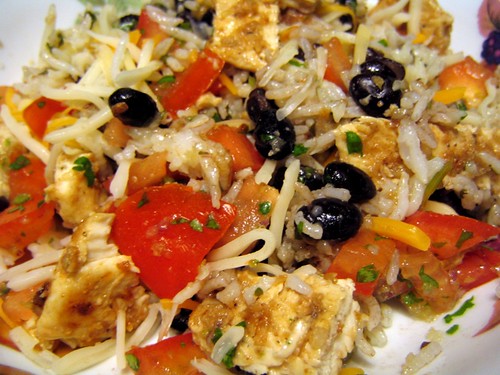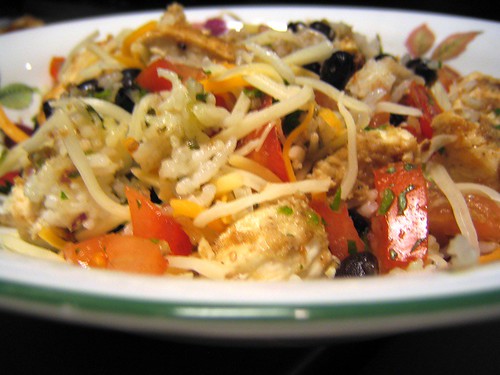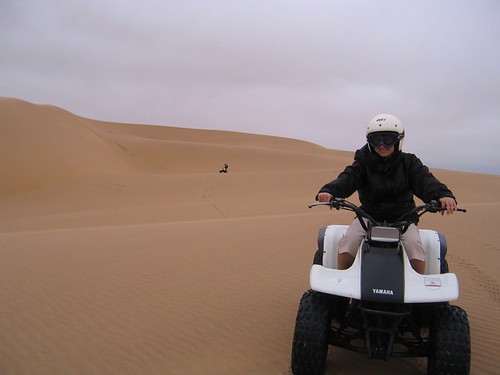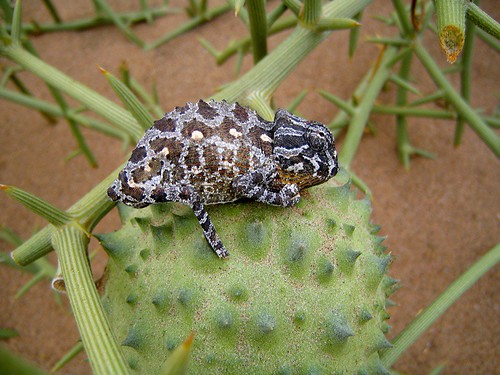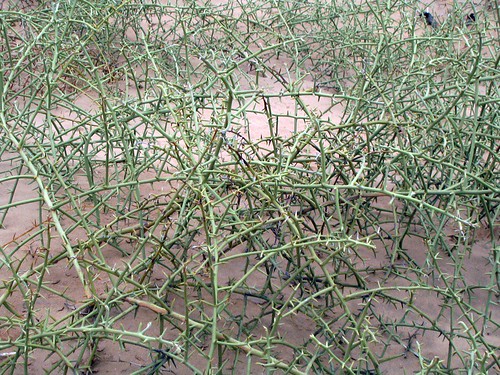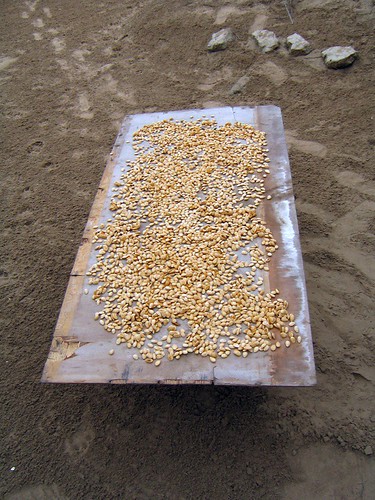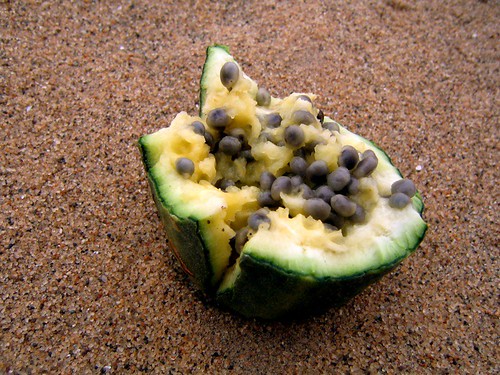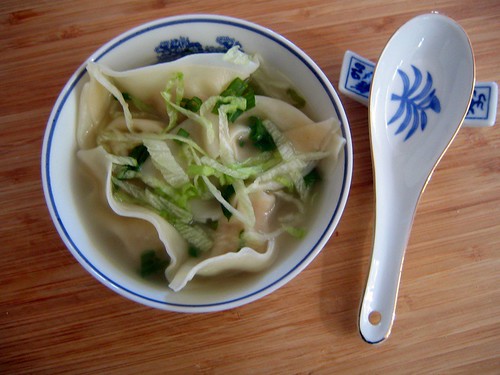
This recipe is amazing! It's the best wonton soup I've ever eaten - better than even the best Chinese restaurant. The greatest part is, it's even easier to make than I would have imagined.

Wonton Soup
Makes approximately 80-90 wontons
Ingredients
12 ounces of ground pork
4 ounces raw shelled shrimp, chopped into small pieces
2-3 ounces bamboo shoots chopped very small
6 scallions, chopped into thin rounds
1 egg yolk
1 egg white, lightly beaten
6-8 leaves lettuce or blanched chinese cabbage
1 1/2 quarts of chicken stock
1/2 tsp sugar
1 tsp thin soy sauce
1 tsp thick soy sauce
1/2 tsp freshly ground black pepper
1 1/2 tsp Shaohsing wine or medium-dry sherry
1 tsp cornstarch
3 tbsp water
2 teaspoons sesame oil
In a large bowl, mix the shrimp and pork with the cornstarch, sugar, soy sauces, pepper and wine. Then stir in the water one tablespoon at a time. Next it's time to take out some aggression. Take the entire meat mixture, pick it up, and throw it back into the bowl. Repeat this about 100 times.
Next, add the bamboo shoots and the white parts of the scallions to the meat mixture and marinate for about 30 minutes. Then blend in the sesame oil. Right before wrapping the mixture in the wontons, add the egg yolk to the mixture.

Now comes the fun part! I used Nasoya wonton wrappers and they worked well. It would have better if they were cut into perfect squares, but they were certainly sufficient for the task.
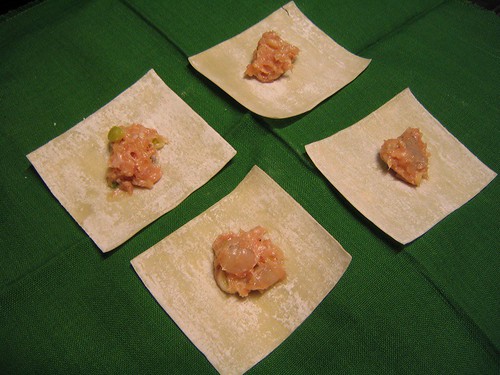
Its really easy to fold a wonton! First, put about a tsp of the mixture onto the middle of the square.
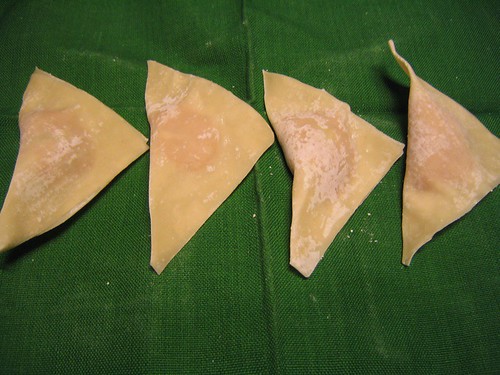
Second, use a brush and paint two edges of the wrapper and fold the noodle in half to form a triangle. Press the edges gently together.
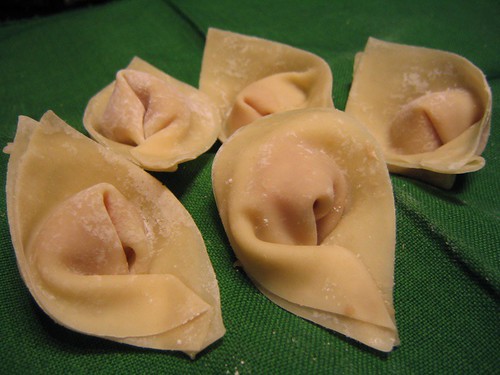
Finally, put a little egg white on one tip, and fold the two tips together, joining them with the egg white you put on.
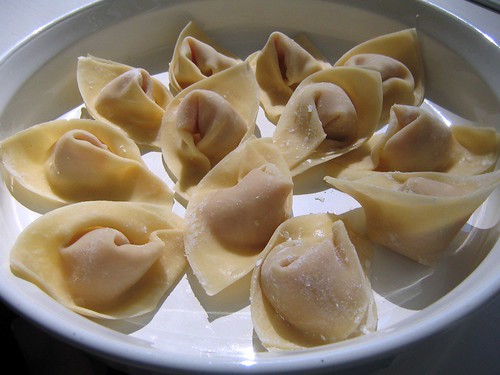
Here are a bunch of beautiful wontons, all waiting to be cooked! In one pan, gently heat the stock, and in another pan, heat water to a boil. When the water comes to a boil, place about 20 wontons in the pan. It will only take about 3 minutes to cook the wontons. When they are done, they float. Remove them carefully and place them in the stock. Repeat until all of the wontons are cooked.
Serve by garnishing with some finely shredded lettuce and scallions on top.

